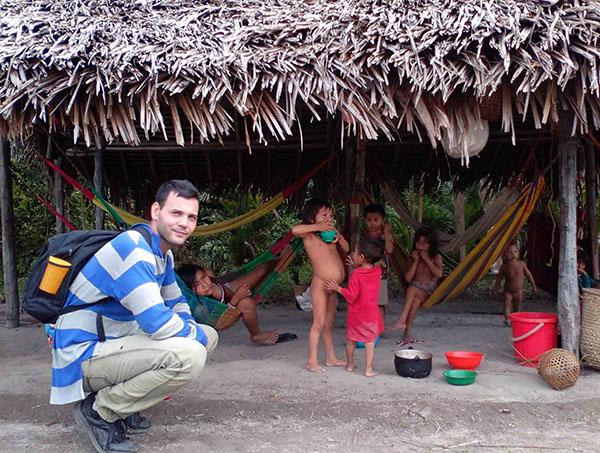
RÍO NEGRO, Venezuela.— The intense green down below is visible from every possible angle when flying at ten thousand feet. This is one of the most dense and almost inaccessible parts of the Venezuelan Amazon.
An almost two-hour flight separates Puerto Ayacucho from San Carlos de Río Negro, the southernmost town of the Venezuelan jungle, and the landscape looks the same from start to finish. However, the blue lines of rivers and streams are interspersed within the greenery.
There are hundreds of white sand beaches, rivers with strong rapids, black stones that stick out above the water and boulders in the middle of the channels, where trees fight for an inch of free land.
At this height, it is difficult to note a trace of human life, although occasionally something down below resembles the roof of a house. “But it's there, and a lot, you need to go down and walk among them to realize it,” Juan José Vázquez, a young doctor from Guantánamo, immediately corrects me. He is the leader of a group of medical staff working at the only CDI (Comprehensive Diagnostic Center) in the municipality.
Aged just 28, his way of speaking reveals a natural command of his work; not only professionally, as an intensive care physician – his passion for which is obvious even outside of the CDI and in his various stories – but in leading the inexperienced team providing healthcare to this southernmost town of the country.
He praises the unity and family-like ties of the small group working in this remote area as fundamental to their coexistence, “to not feel lonely and to shoo away that huge shadow that hangs over you every day reminding you of Guantánamo, Cuba, your family, your neighborhood, the people…
“I spent many months in Río Negro, enough that nobody can tell me any stories about how people live and work down there.
“I arrived practically still smelling like a student and felt that this would be my real test; but as the days passed I had already shown that practice is the best training.”
The plane suddenly hits some turbulence and everyone clings to their seats. Juan José is silent for a few seconds, before instantly taking up the narrative thread regarding his long time working in the jungle.
“The town is very quiet, although at times the routine is broken with a good case. Usually, for each shift one nurse is sufficient, and one doctor; however, it is nice to see the entire team attending to any patient we admit.
“It’s the youthful desire to do more, to learn. There is the doctor on shift, but each admittance is like a practical university class, with five or six students around the bed, providing medical opinions and putting together a diagnosis, as a multidisciplinary team.
“The impressions of patients are very good, as they see a group of doctors at their service, many for just one person, and this alone comforts them; but the truth is they want to do more.
“That's why every little while we go, along with three Venezuelan doctors in charge of the district, to the indigenous communities along the Río Negro, two or three hours upstream, or along the Casiquiare Canal. Community intervention is always a new adventure, but nothing that you can be told is better than experiencing the reality down there. We’re eager to arrive,” Juan José notes.
This introduction to what we would find made the journey seem shorter. Juan José still has much to tell us, but the pilot announces sight of San Carlos.
A small town can be seen to the side of a wide current, a track of red earth to land on and a group of white coats at the end.
“My colleagues are very good. They hear the plane arriving and come out, with the longing for the day it will be their turn to return. It’s unavoidable. However, today they are on the landing strip to unload the food we have brought. They have had some tough days with the limited diet and they know that tonight they will eat better. Things are really hard, but we are still here,” the doctor says, just before a real scare silences us all.
As the wheels are about to touch down on the runway, the plane abruptly lifts its nose, the spluttering of the engine speeds up, it rises a few meters and abruptly does a complete turn to the left. What a welcome.
GENERO: Report
SECCION: World
PC: , , , , , ,
FOTO:
Medicos1: For young Dr. Juan José, each visit to an indigenous community is a new adventure. Photo: Dilbert Reyes Rodríguez








